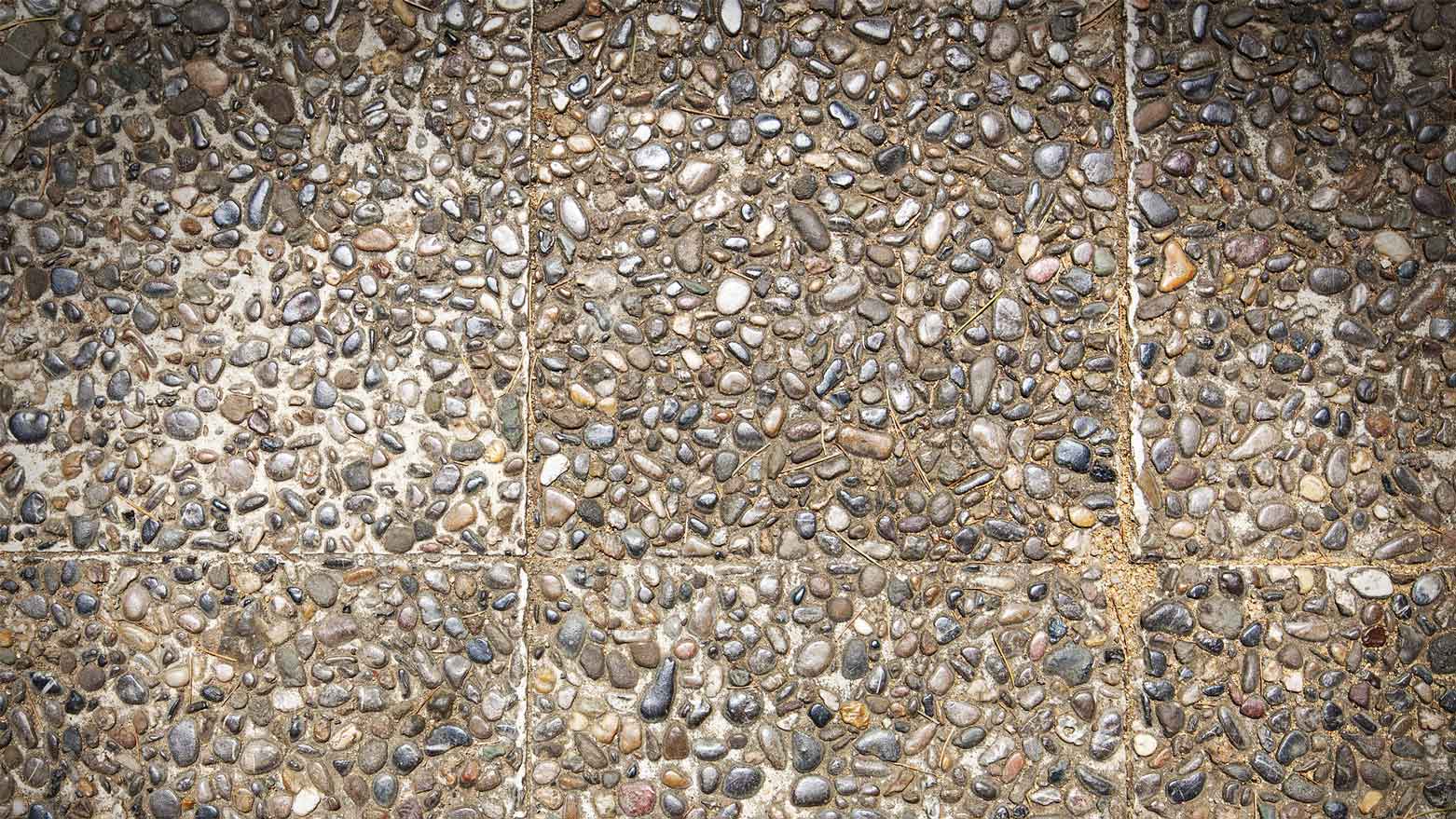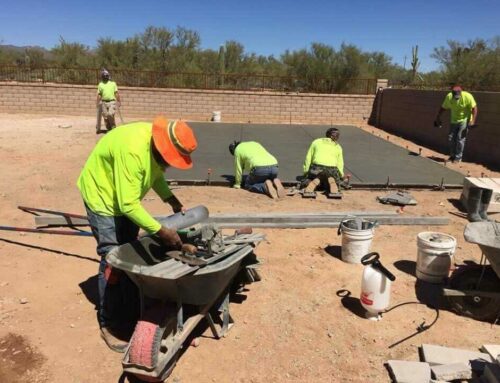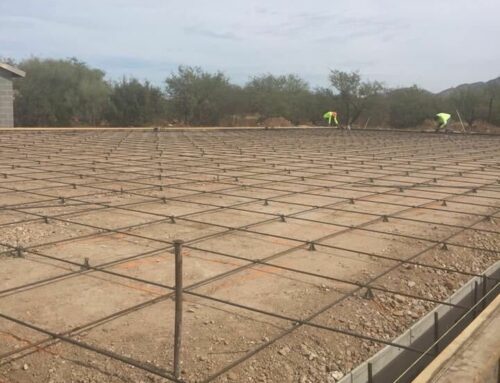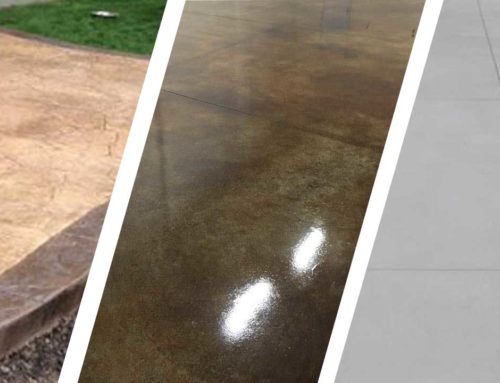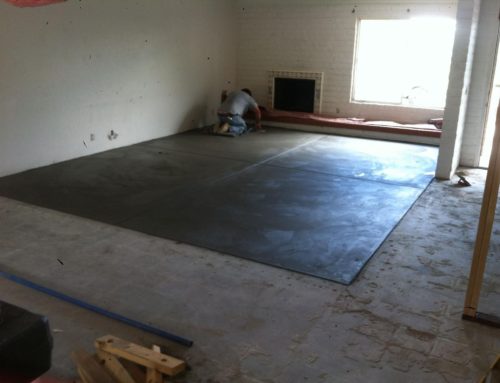You know you like the look of it. It has lots of traction for your steep driveway. You see a lot of it…Is it expensive? How does exposed aggregate work?
The process of exposing the rocks in your concrete, known as exposed aggregate, has been popular as long as I can remember. The process is not complex but it does take practice to get good at. There are quite a few options with seeding of stone, glowing material or tumbled glass and color in the mix but we will stick to the basics of how it works.
Before placing a large amount of exposed concrete a plan must be made as to how the waste product will be dealt with. For large driveways we use a settling pond method to collect the solids and allow the clean water to flow. Does your Contractor have a plan? You will understand this better at the end of the article.
The exposed aggregate concrete is placed similarly to a regular finish. Some contractors skip the floating process and go directly to a steel fresno trowel to reduce the amount of fine material at the surface. The whole surface is worked until no pronounced ridges exist. The finishers also use steel hand trowels to minimize surface cream.
Once the finish is consistent and the concrete has a firm set the retarder or etch is applied. This product stops the top layer from setting up. Some use Sugar, brown sugar or molasses but they are hard to control and much more advanced products are available to ensure a consistent exposure.
Once the retarder is on some methods require covering with plastic sheeting to keep the air away from the surface. Other more advanced methods go on almost like latex paint and create their own seal. Though expensive these products are great for peace of mind.
Once the exposed aggregate slab has set up for 3-6 hours the surface can be washed away. A garden hose can be used if it is washed early enough though a lot of water is wasted. With proper timing a pressure washer with a low flow volume is ideal. Starting at the top of the hill each section is washed thoroughly down to the bottom. The waste will be pushed off to the side where it can be cleaned up later or into a series of settling ponds designed to trap solids.
Once the surface is washed it will still have milky residue left behind. This will have to be acid washed later. If you plan to seal the surface you can wait until the concrete is cured or if not wait for a few days of set before acid washing. The acid brightens up the surface quite a bit. Make sure your contractor neutralizes once the acid wash is done.
If you are having sealer applied know that you will have maintenance. The sun eats it up and if you are sealing a driveway the vehicles wear it off. Tire tracks will require re-coating every year or two in Tucson.
I hope this helps you wrap your mind around exposed aggregate concrete. With all the extra steps be prepared to spend a little more. A large driveway will set you back between $12-$20 per square foot with licensed, bonded and insured contractors.
Jon Molden

